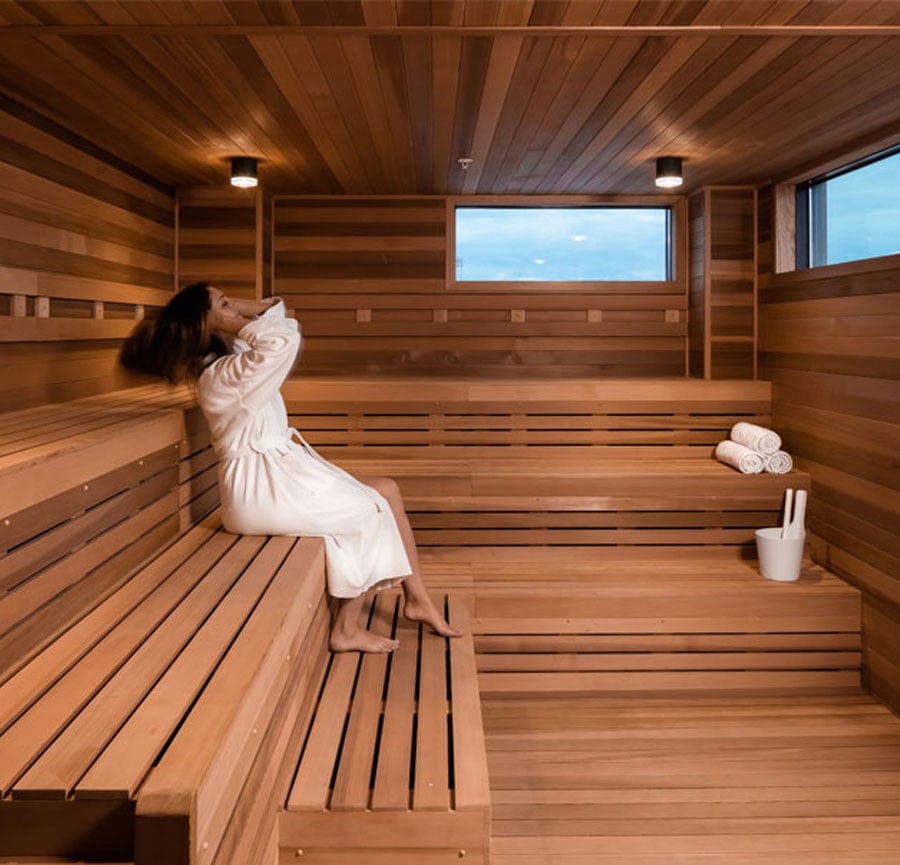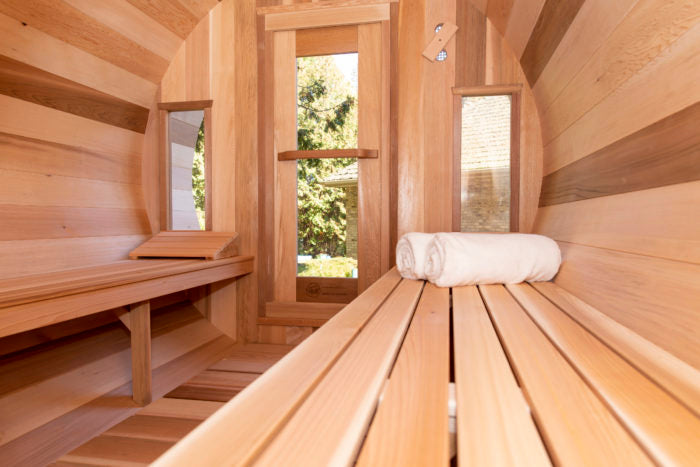An Unbiased View of Traditional Sauna
Table of ContentsThe Traditional Sauna Ideas5 Simple Techniques For Traditional SaunaThe 4-Minute Rule for Traditional SaunaThe 7-Minute Rule for Traditional Sauna8 Easy Facts About Traditional Sauna Shown
Many of the weight lost in a sauna is water loss and is re-gained upon rehydrating. Without a question sauna can be a vital part of a healthy weight loss program. To check out the differences between traditional and IR saunas, I will certainly divide these right into proven, academic, and made differences.Thus, the most popular point in the saunawhich is at the ceiling straight above the sauna heateris commonly between 185 and 190 F. Claims that a typical sauna exceeds 200 F is merely not true and not applicable for electric saunas offered in the US. The temperature level for a far-infrared sauna is typically set in between 120 and 140 F; however, unlike the traditional sauna, the objective in and IR area is not to attain a heat.
Due to this, the temperature level difference is almost unnecessary, considering that profuse sweating leads to both sauna kinds, yet the method of warming the body is various. In an IR sauna the bather will really feel hot and will certainly sweat a lot, but at a lot lower temperatures. Traditional Sauna. Hence, if the goal is to spend longer periods of time in the sauna, the IR sauna is a good option

Rumored Buzz on Traditional Sauna

When the high temperature level is accomplished, the aspects cycle on and off to preserve the high temperature. Traditional Sauna. A lot of standard sauna users appreciate pouring water over the rocks to develop heavy steam to raise sauna moisture degrees. The advantages of putting water over the rocks consist of: making the area much more comfortable, dampening the nasal passages, and allowing the usage of aromatherapy by mixing crucial oils with the water
In a far-infrared sauna, the warm waves permeate the body to successfully heat up the body and elevate the body core temperature. To accomplish this increased temperature level, Far-infrared emitters develop infrared power which is close to the exact same wavelength as that which the body naturally emitsoften referred to as the "Crucial Range" of 7 to 14 microns), so the power is well received by the body.
When the power enters the body, it triggers the body temperature to boost and inevitably leads to sweating. In an infrared sauna it's vital for the emitters/heaters to stay on virtually regularly. Given that there is no mass of rocks to keep warm, the sauna will certainly cool if the emitters shut down.
Little Known Facts About Traditional Sauna.
As pointed out over, the sauna bather in an infrared space desires to place himself in front of operating emitters to obtain maximum gain from the warm. The heating time for the two areas can be extremely various, depending upon how the areas are used. For a typical sauna, a link bather must enable 30-40 minutes for the area to attain a desired temperature and to effectively pre-heat the rocks.
A well created sauna will typically achieve a temperature of 150-160 F in regarding 30-40 minutes. For hotter temperature levels, the area might require to heat for a longer period. When the area achieves set temperature, the heating system will certainly cycle on and off, usually running about 50% of the moment. The insulated walls and the heated rocks will keep the area hot and at steady temperature levels.

Conventional saunas often tend to be larger (thus make use of more power) than infrared saunas, although conventional saunas are certainly available in one and two individual dimensions. For a two-person conventional sauna, 5x6 or 5x7 size is most popular. The top bench can comfortably seat 2 or three individuals and is additionally long sufficient to lie down throughout the sauna session.
Some Known Details About Traditional Sauna
The typical price per kWH of power in the U.S. is approximately $0.11 - Traditional Sauna, so a 4.5 kW heating system will cost roughly $.50 to run great site for one hour, if the heating unit runs continuously for one hour. Normally a sauna heater will compete 75% of the first hour and 50% of succeeding hours on considering that the elements cycle once the set temperature level is achieved
A two individual far-infrared room is normally literally smaller sized than a typical sauna, frequently regarding 4' x 4' or smaller. The IR heating system is typically 1.5-1.7 kW using a 120 volt 15 amp plug-in solution. Given that the room can be used faster than a sauna area, we will certainly presume the room is used for to of an hour consisting of warm up time.
Lastly, there is see page a seldom gone over distinction in the social experience between both spaces. While our society has actually shed several of the social advantage of the standard sauna experience, it can be really socially gratifying. From family members time in the sauna, to heart-felt discussions with substantial others, to sauna partiesthe typical sauna experience can bring about intimate mingling.
The Best Guide To Traditional Sauna
A lot of higher end infrared rooms consist of tinted light treatment, sound systems and full-glass fronts.